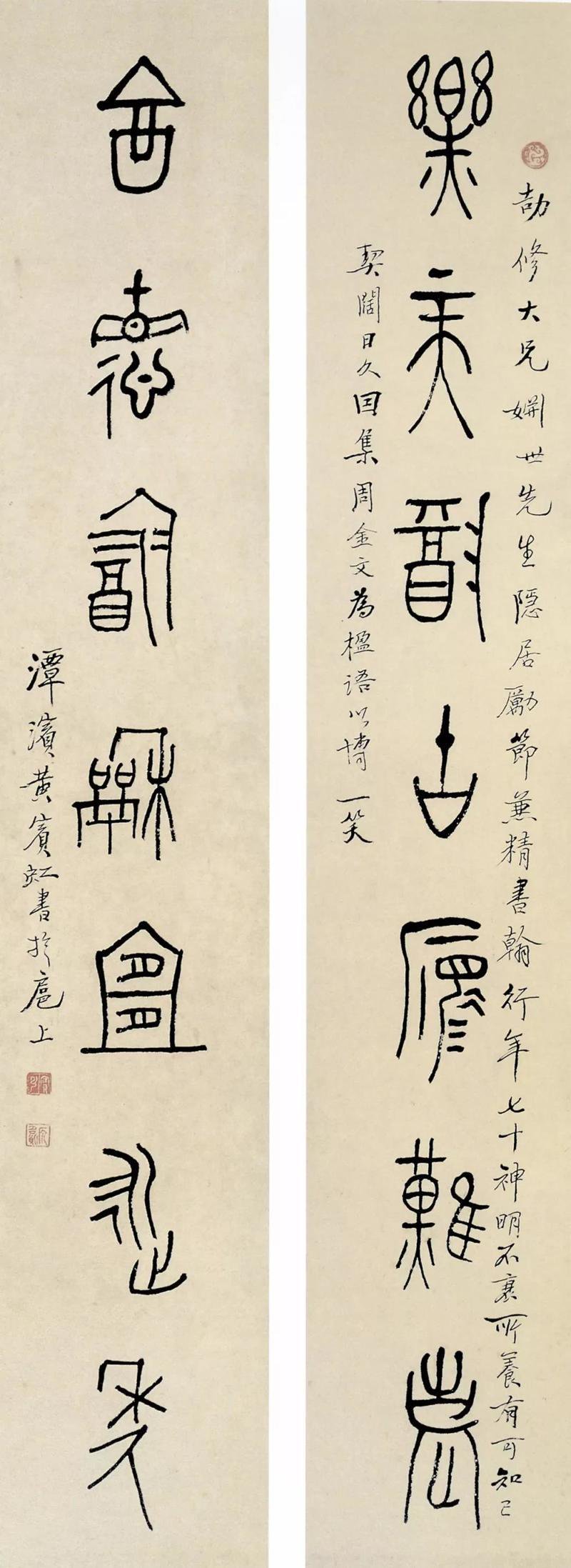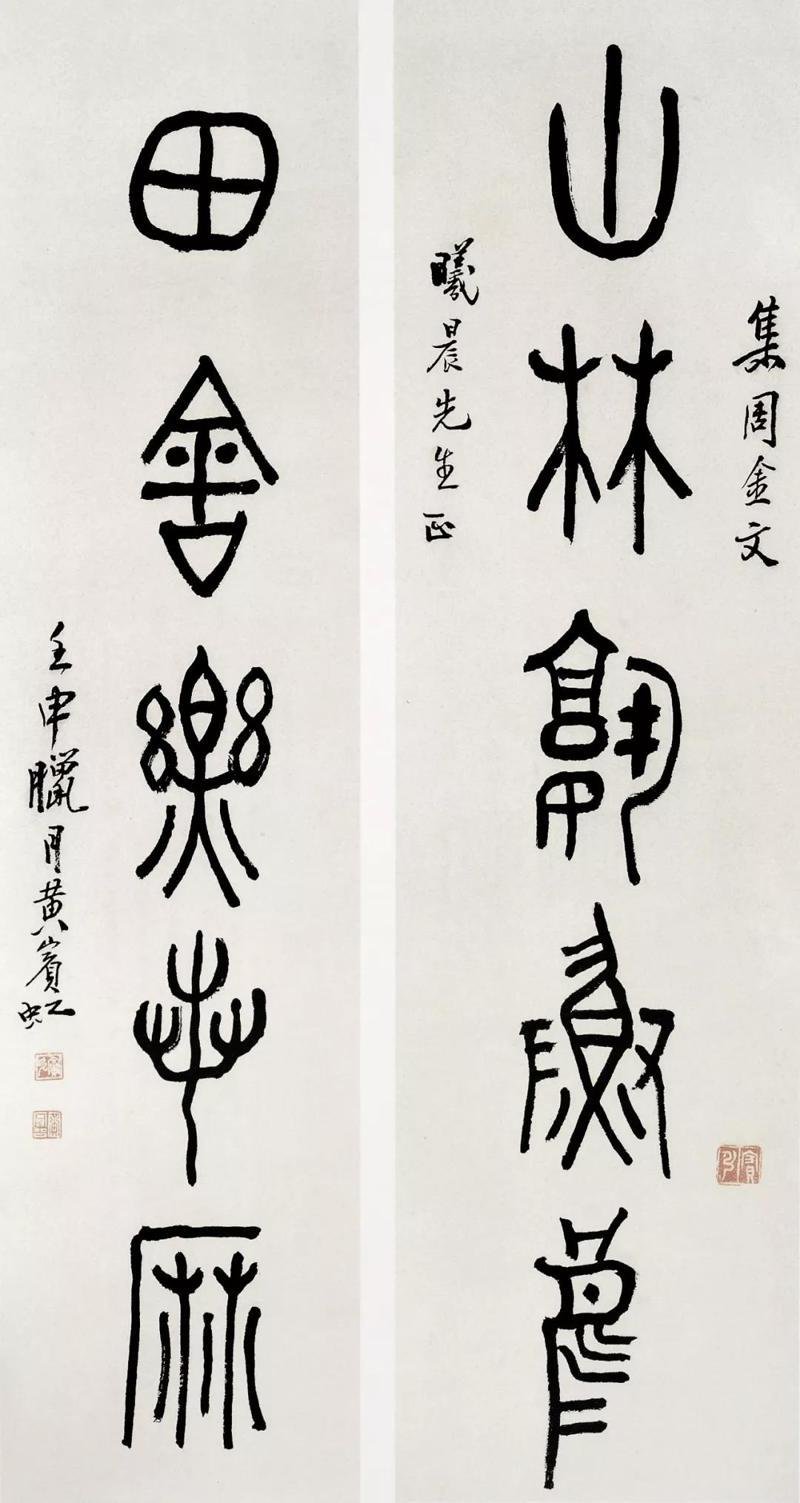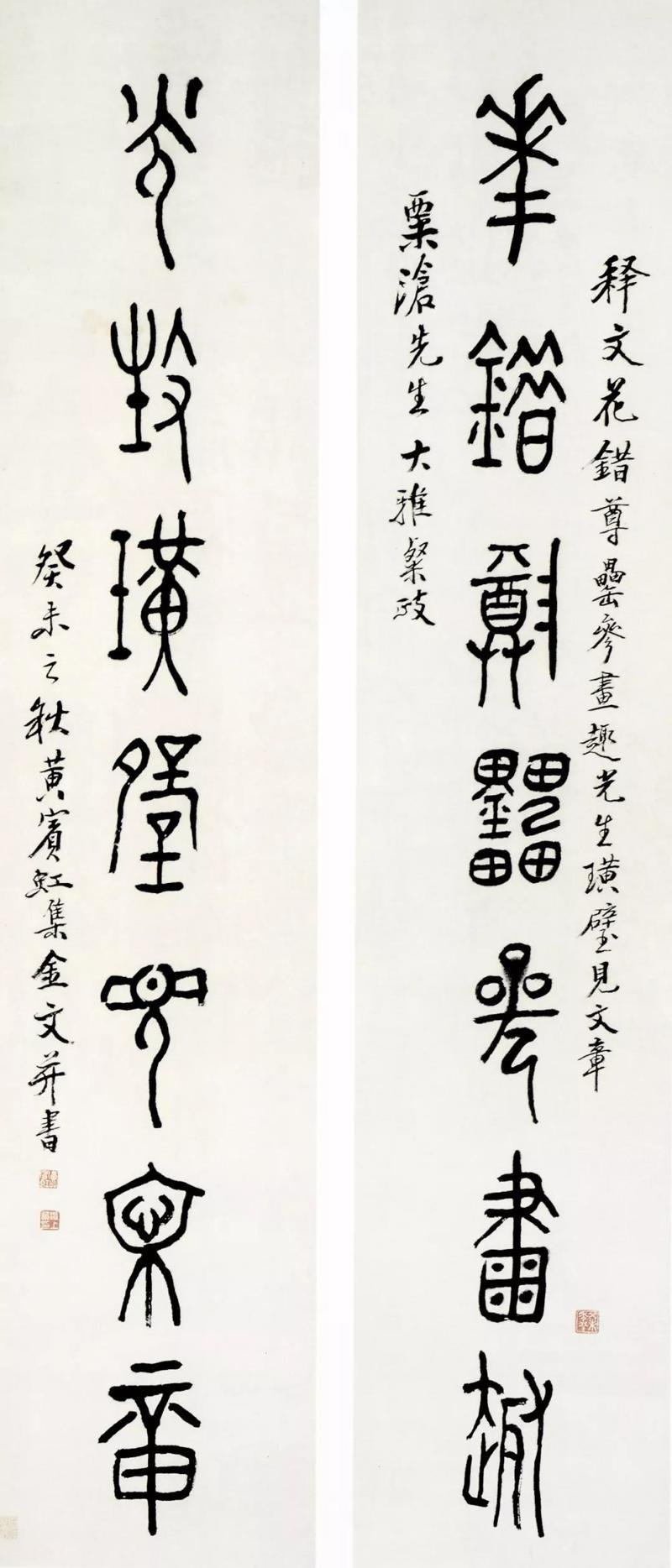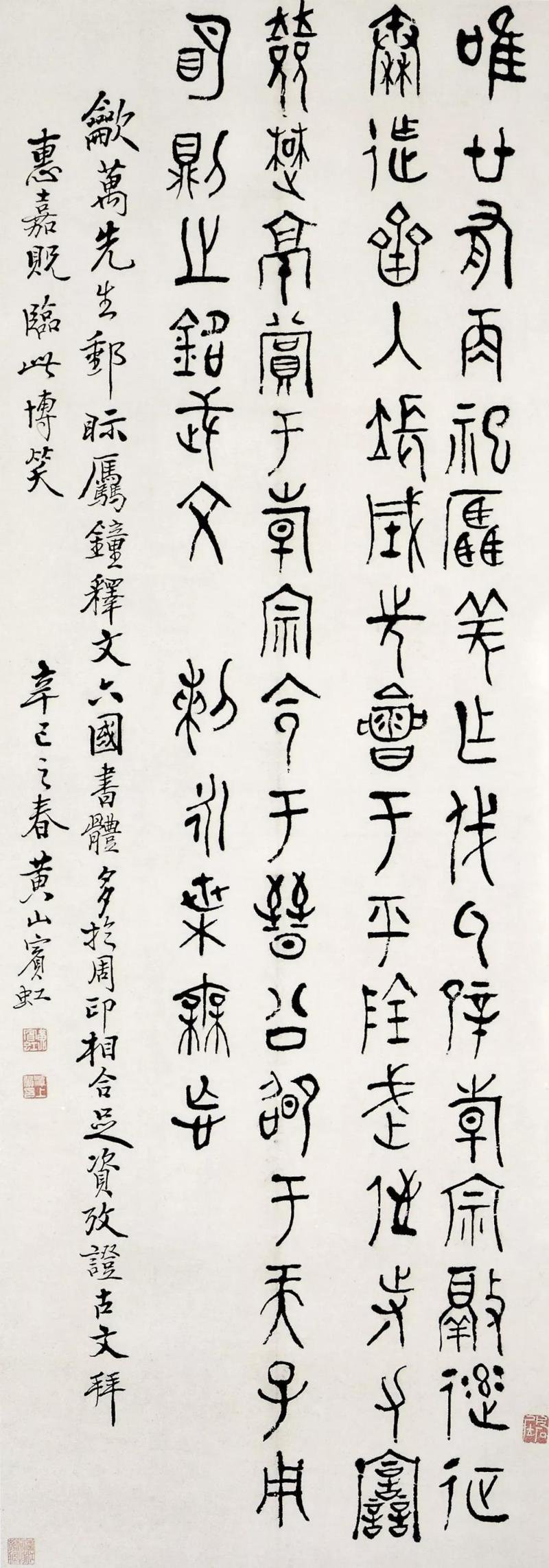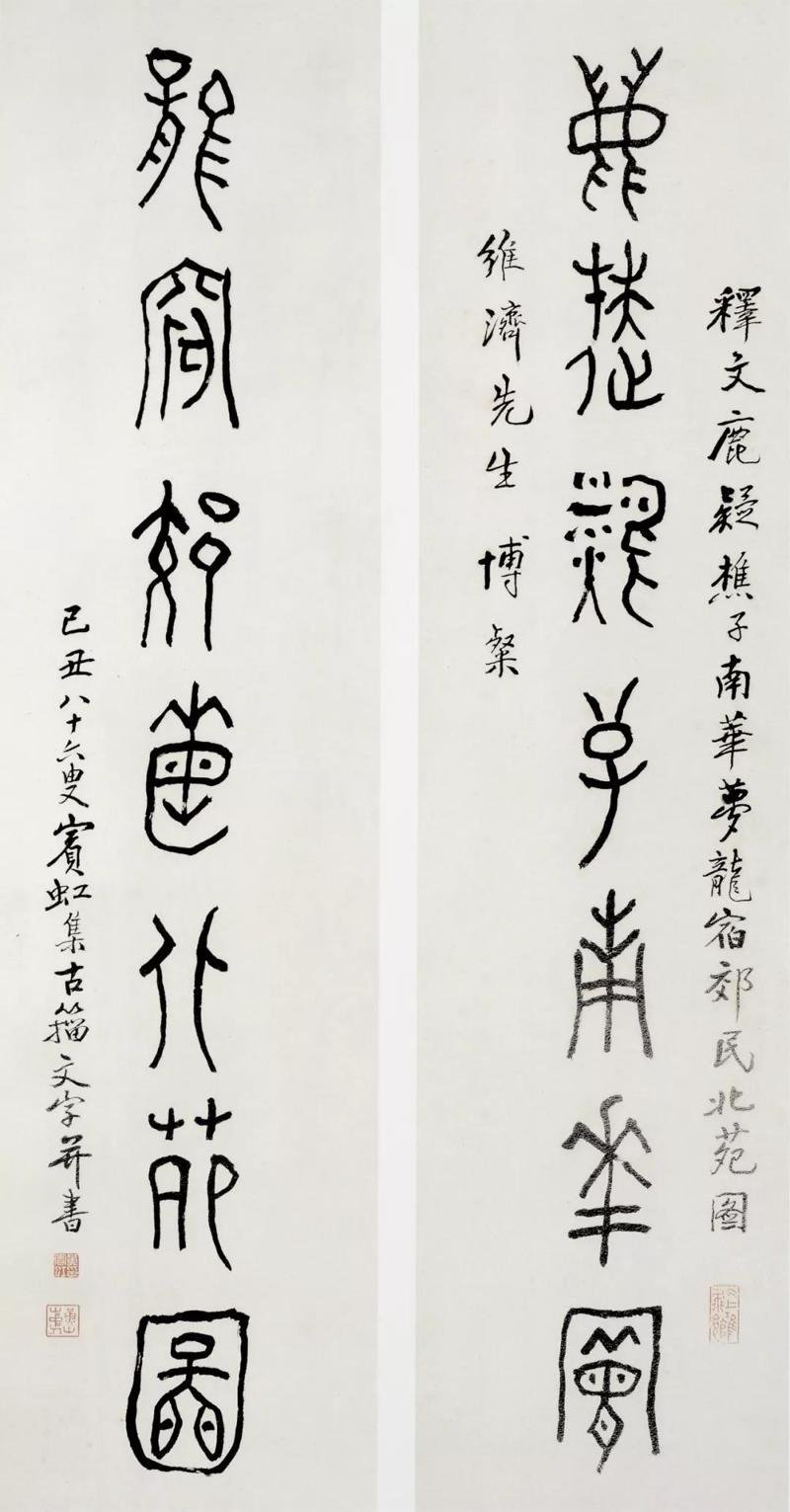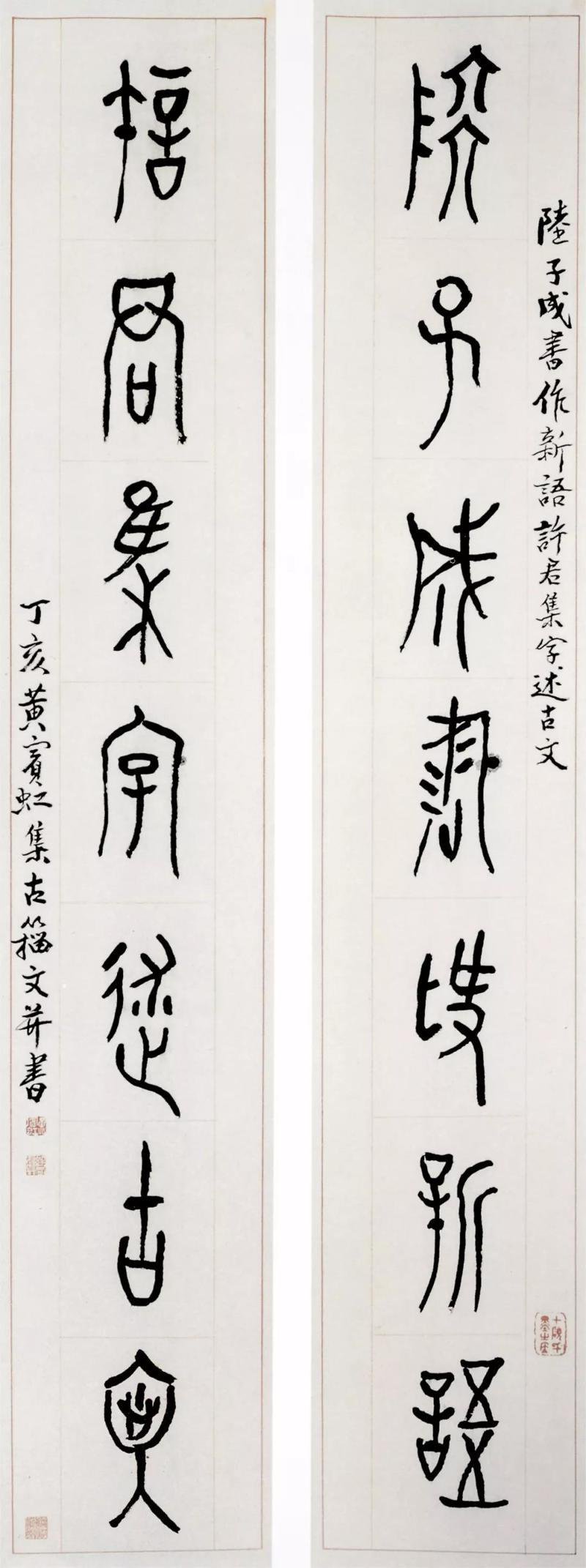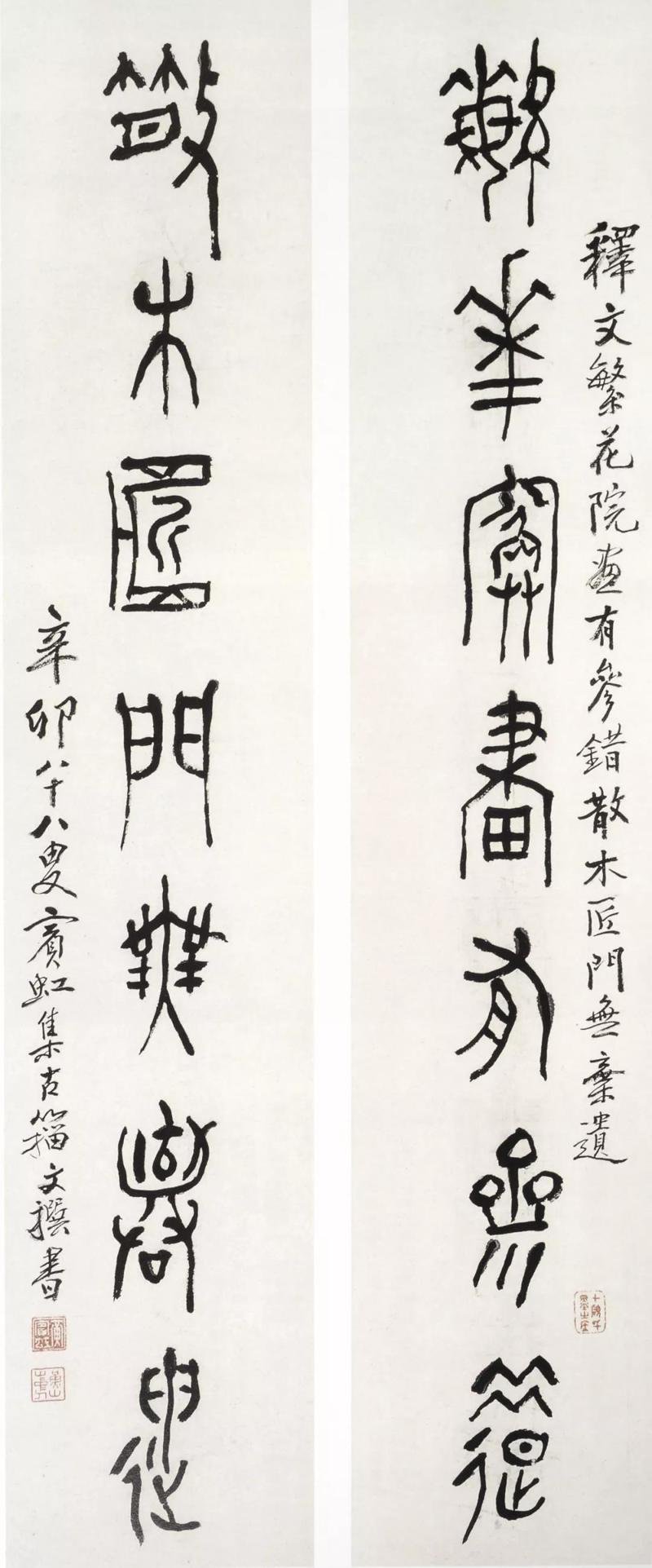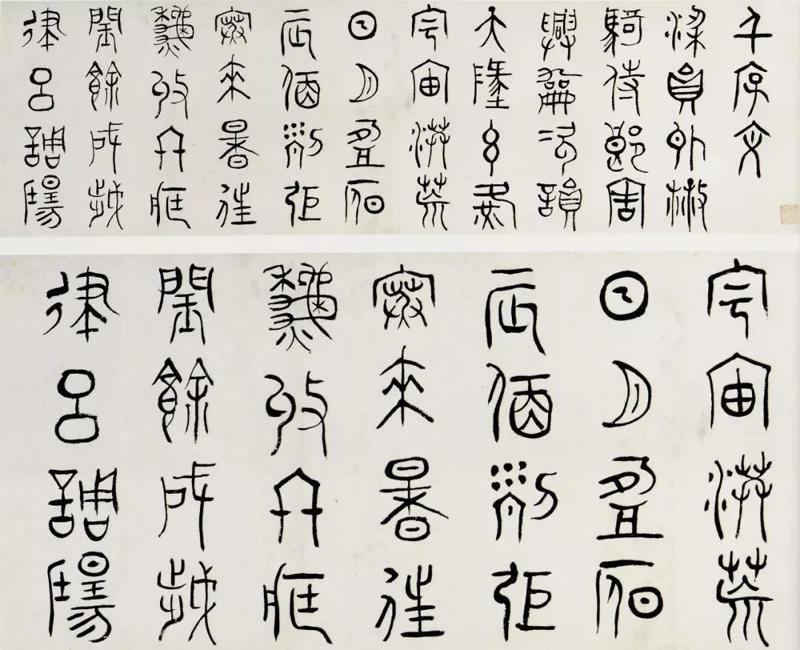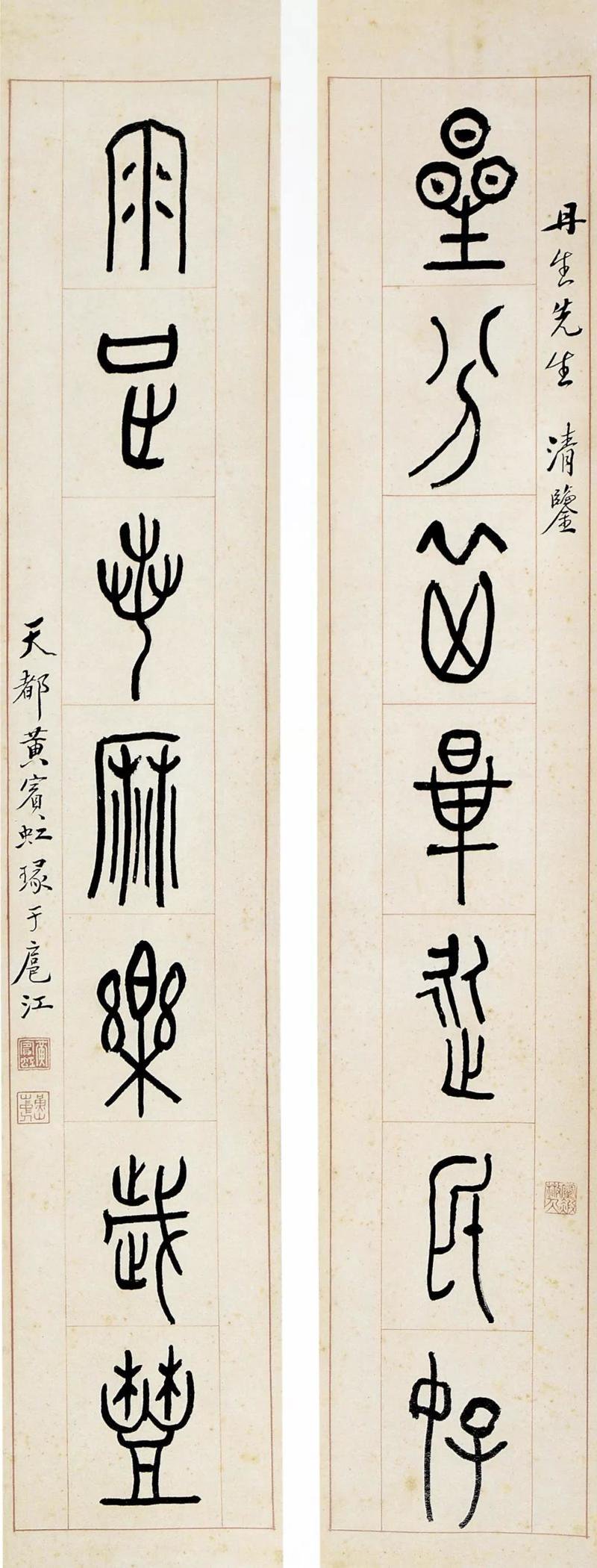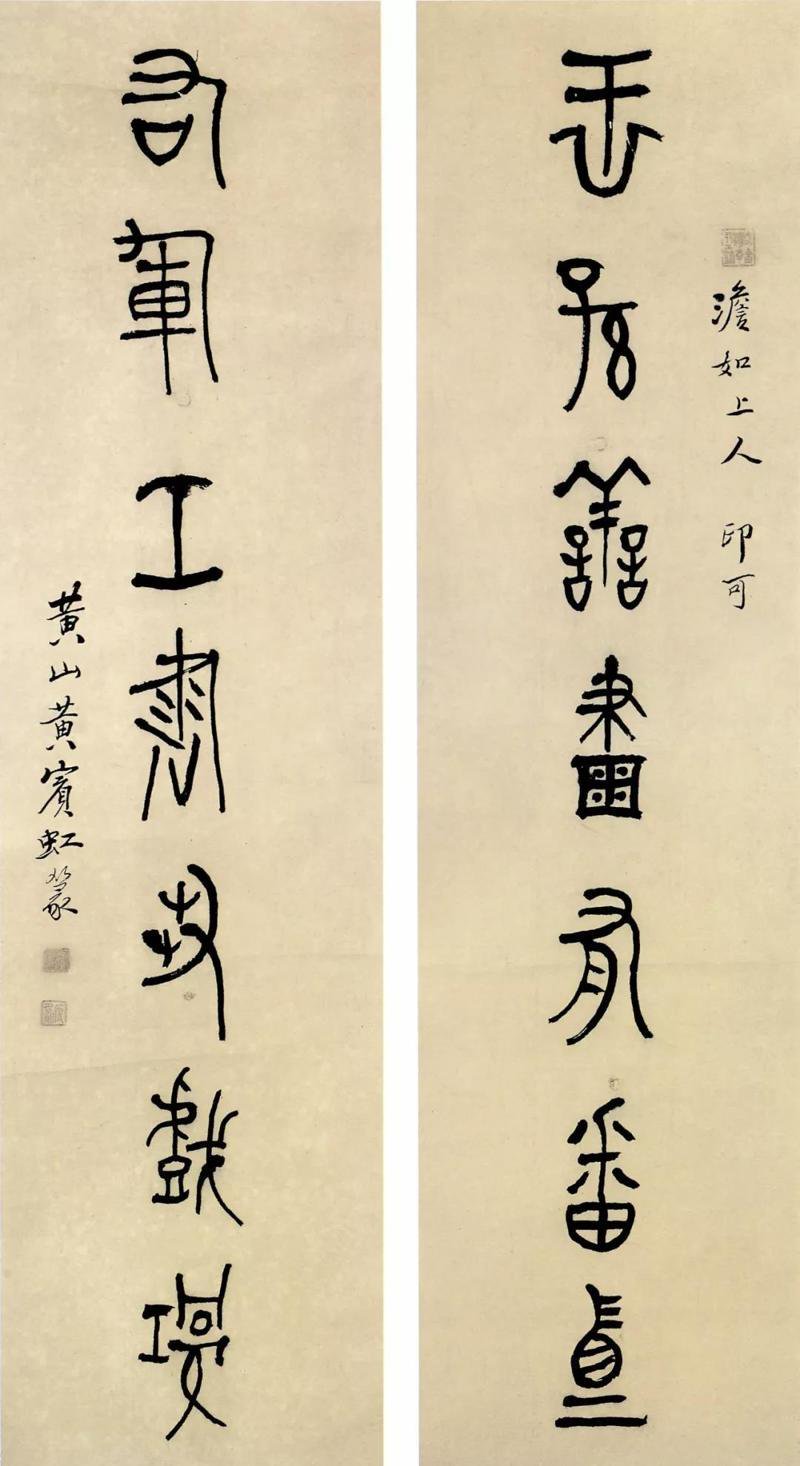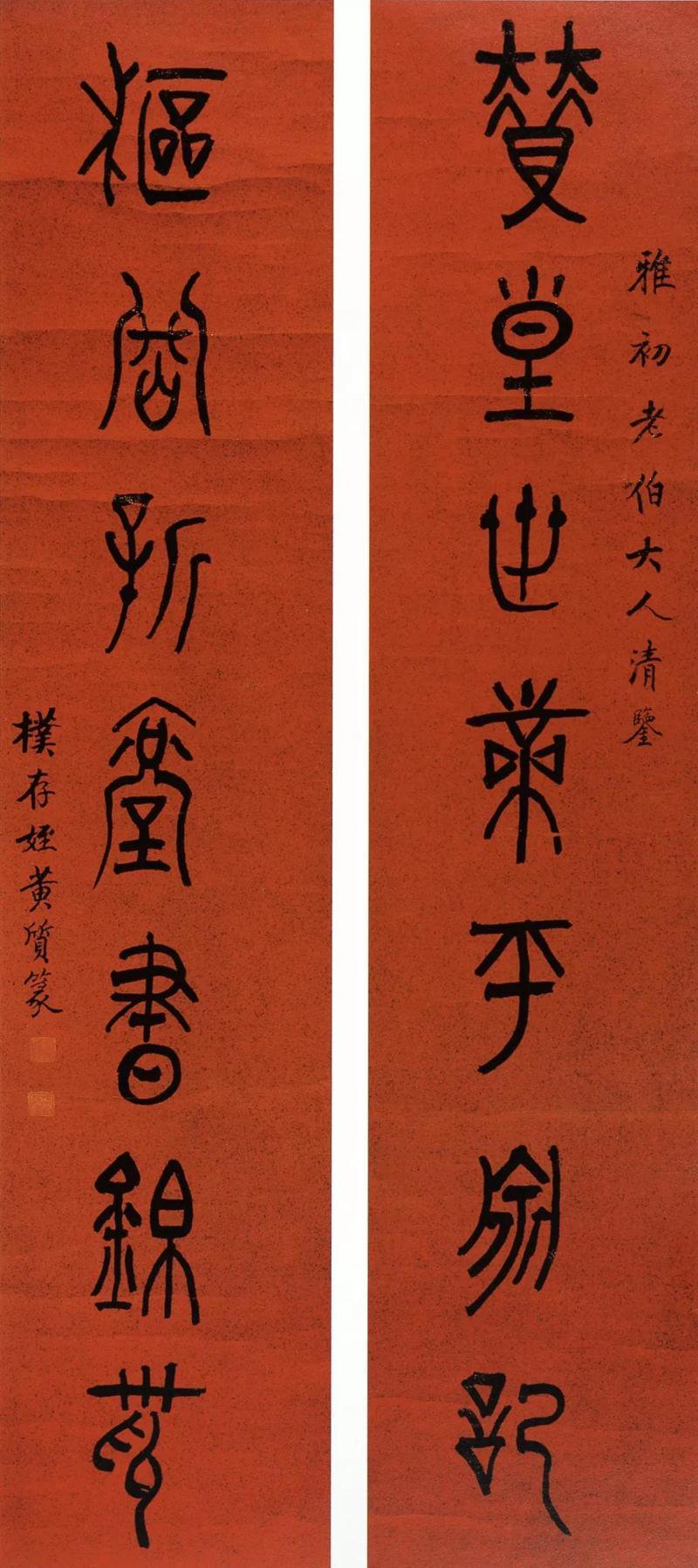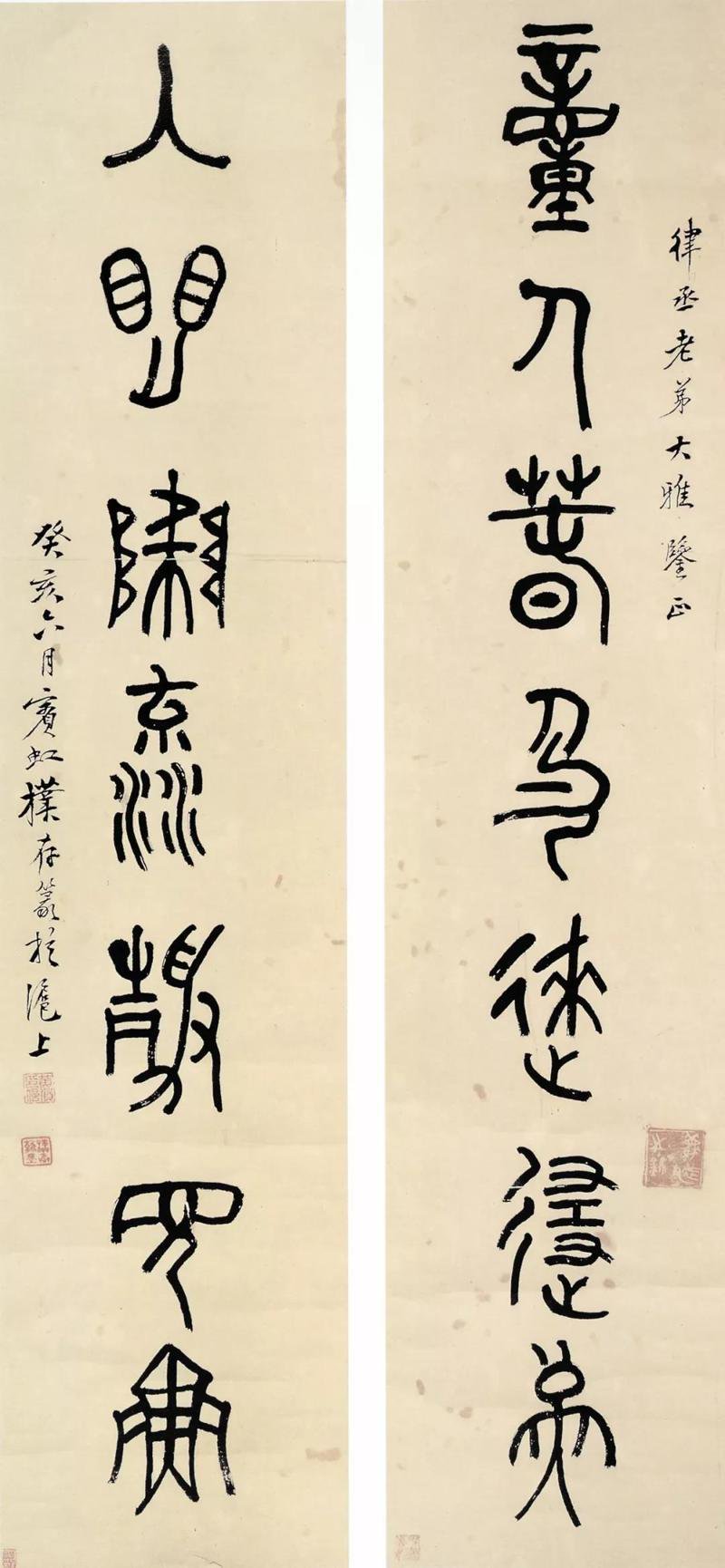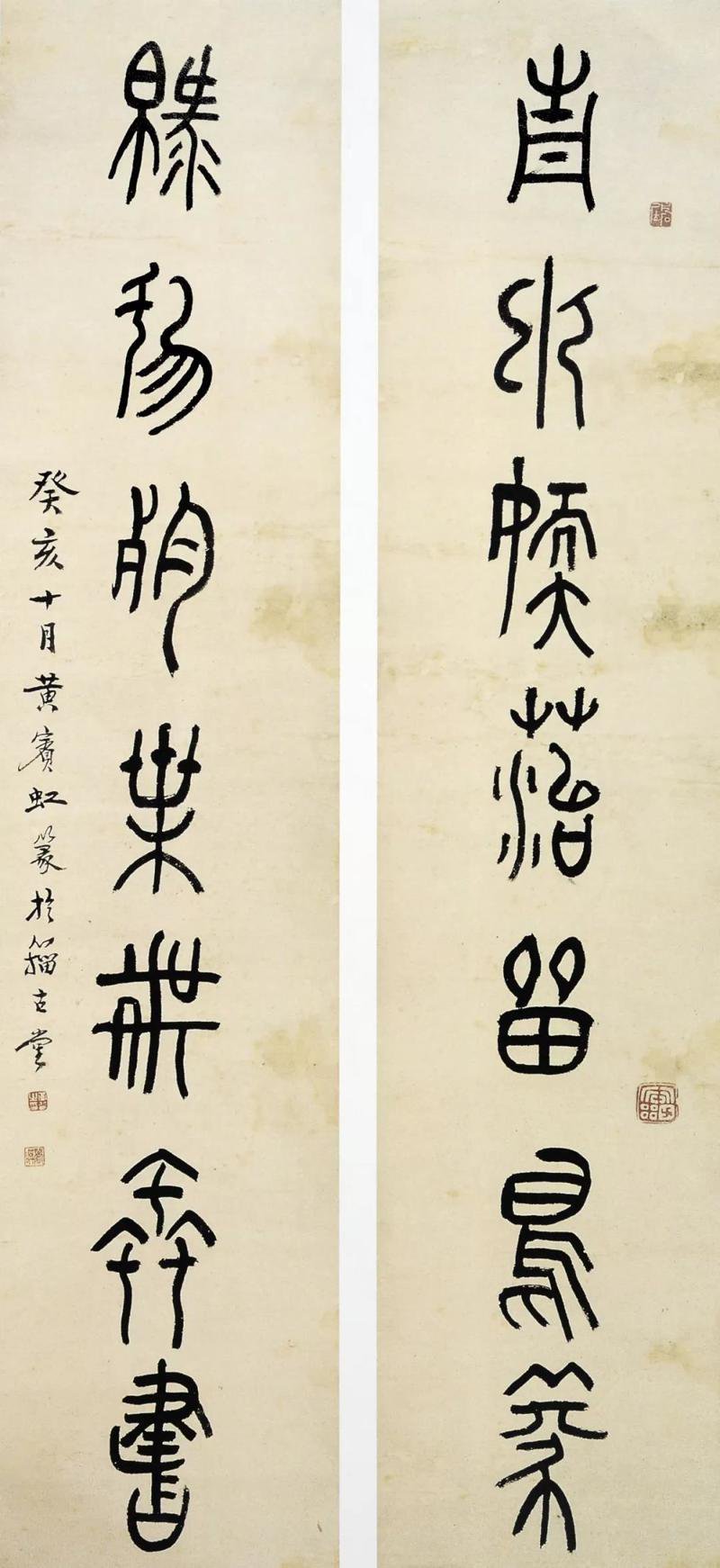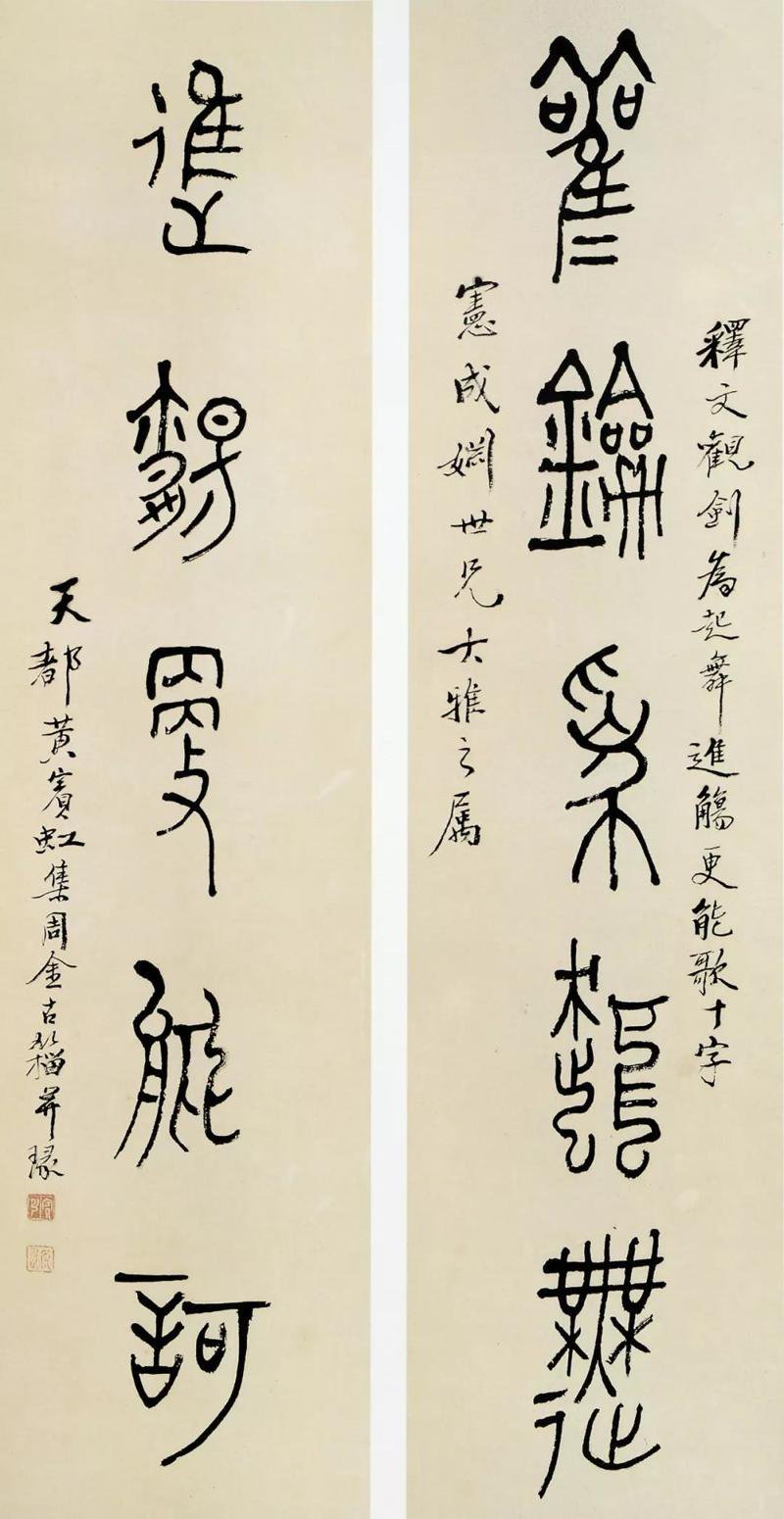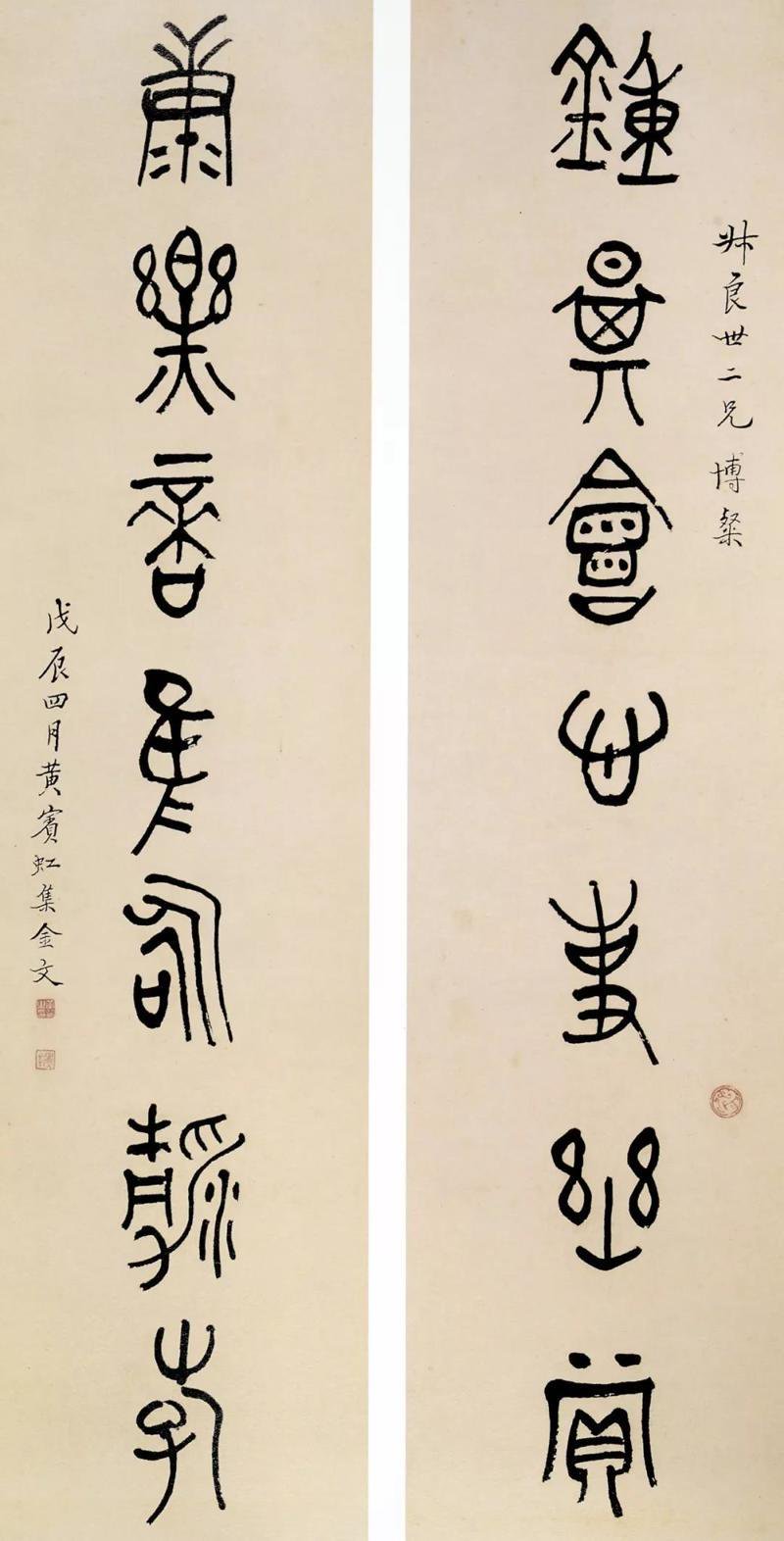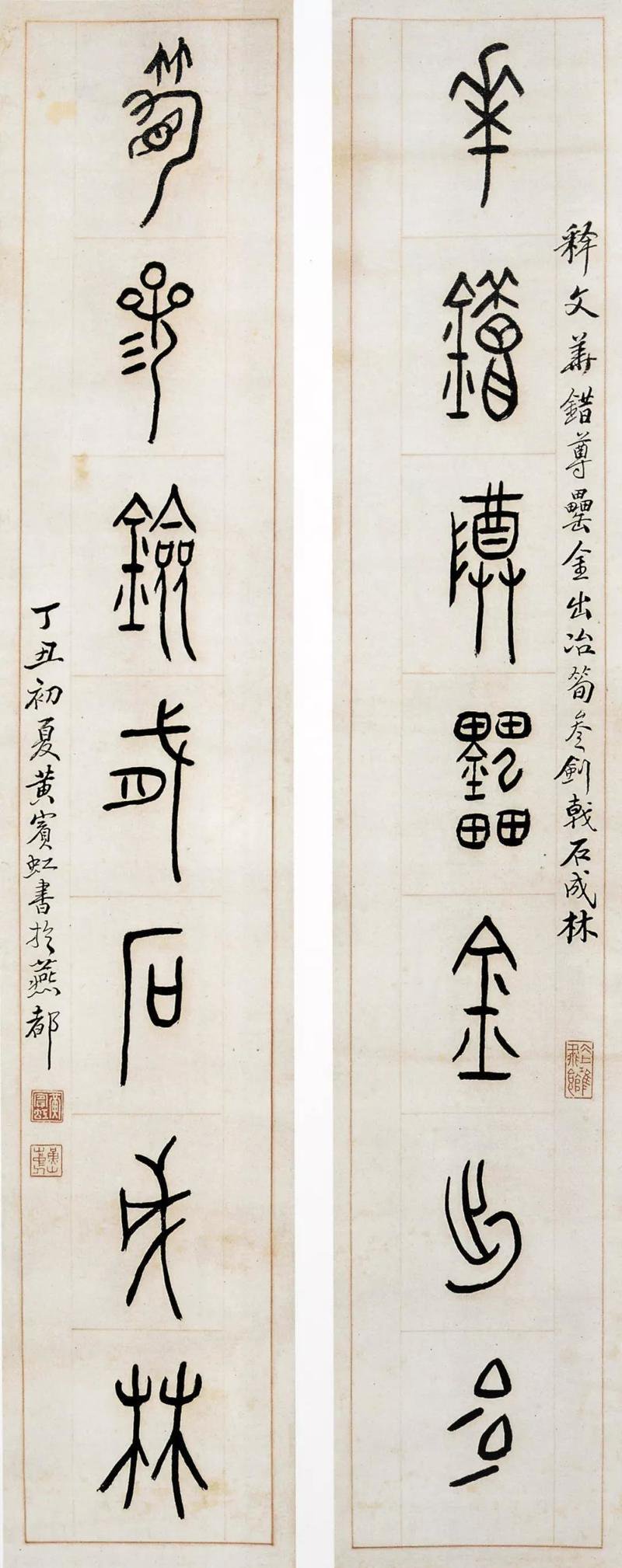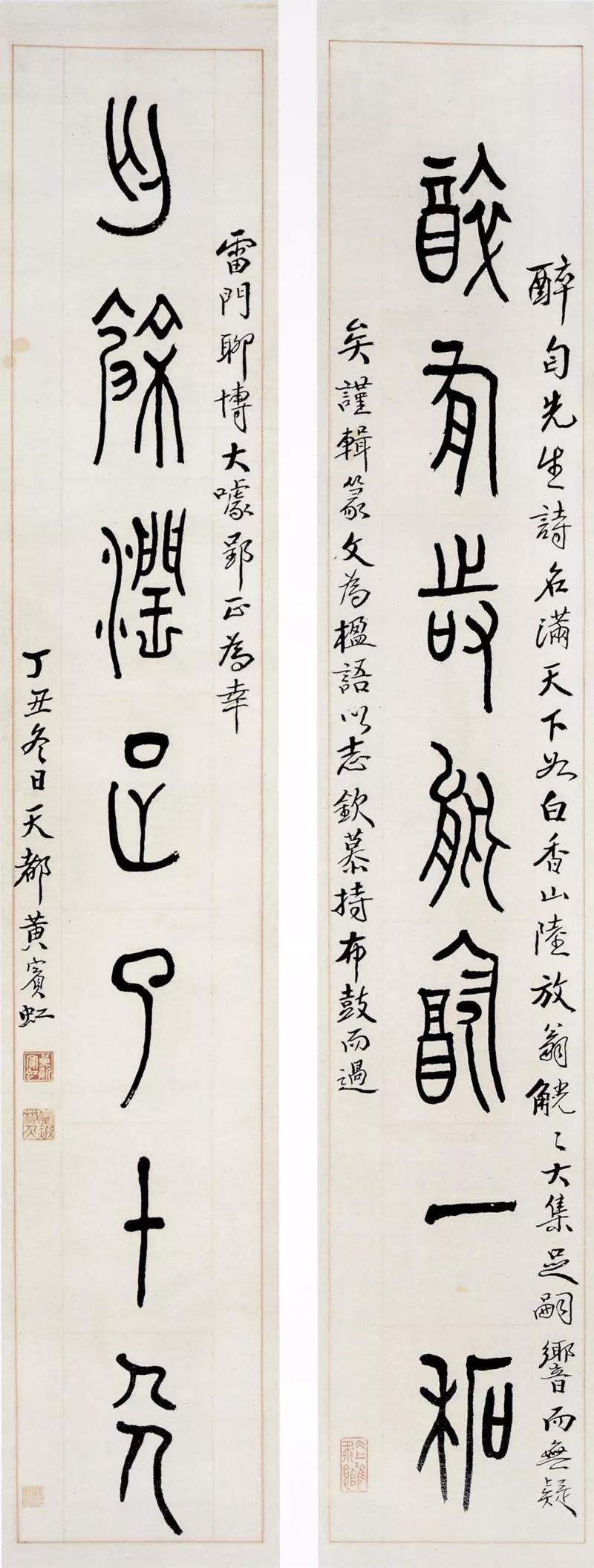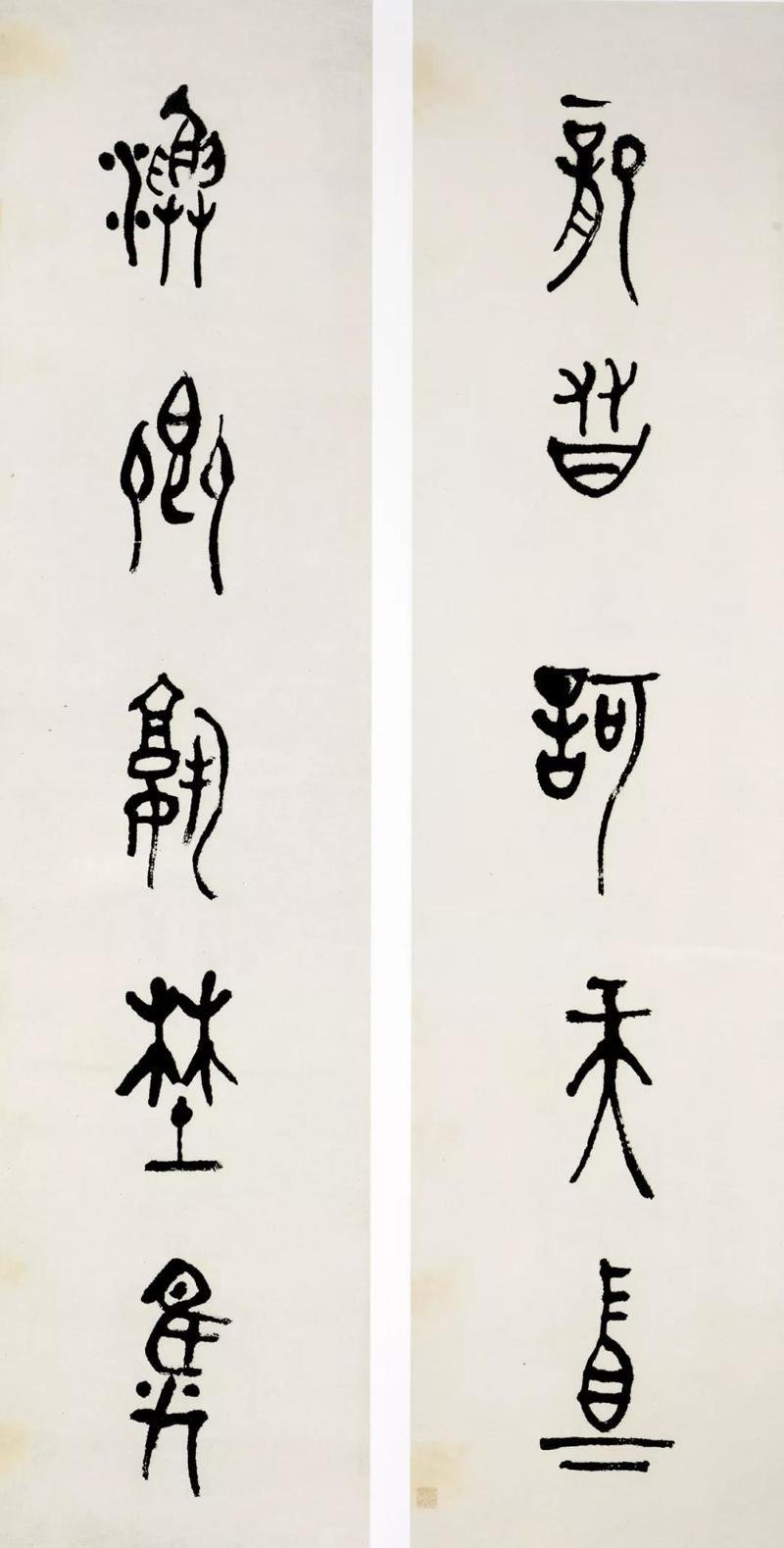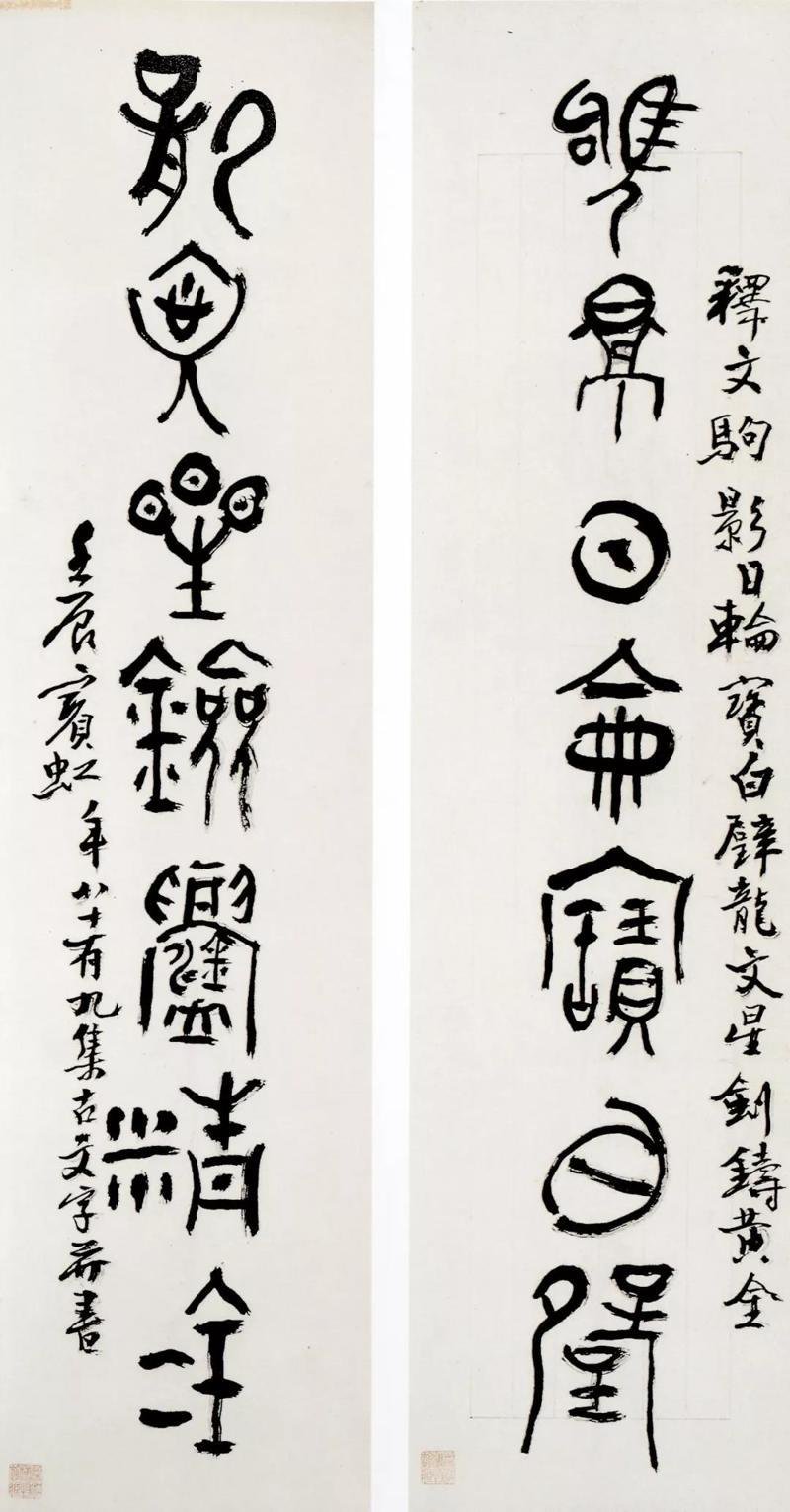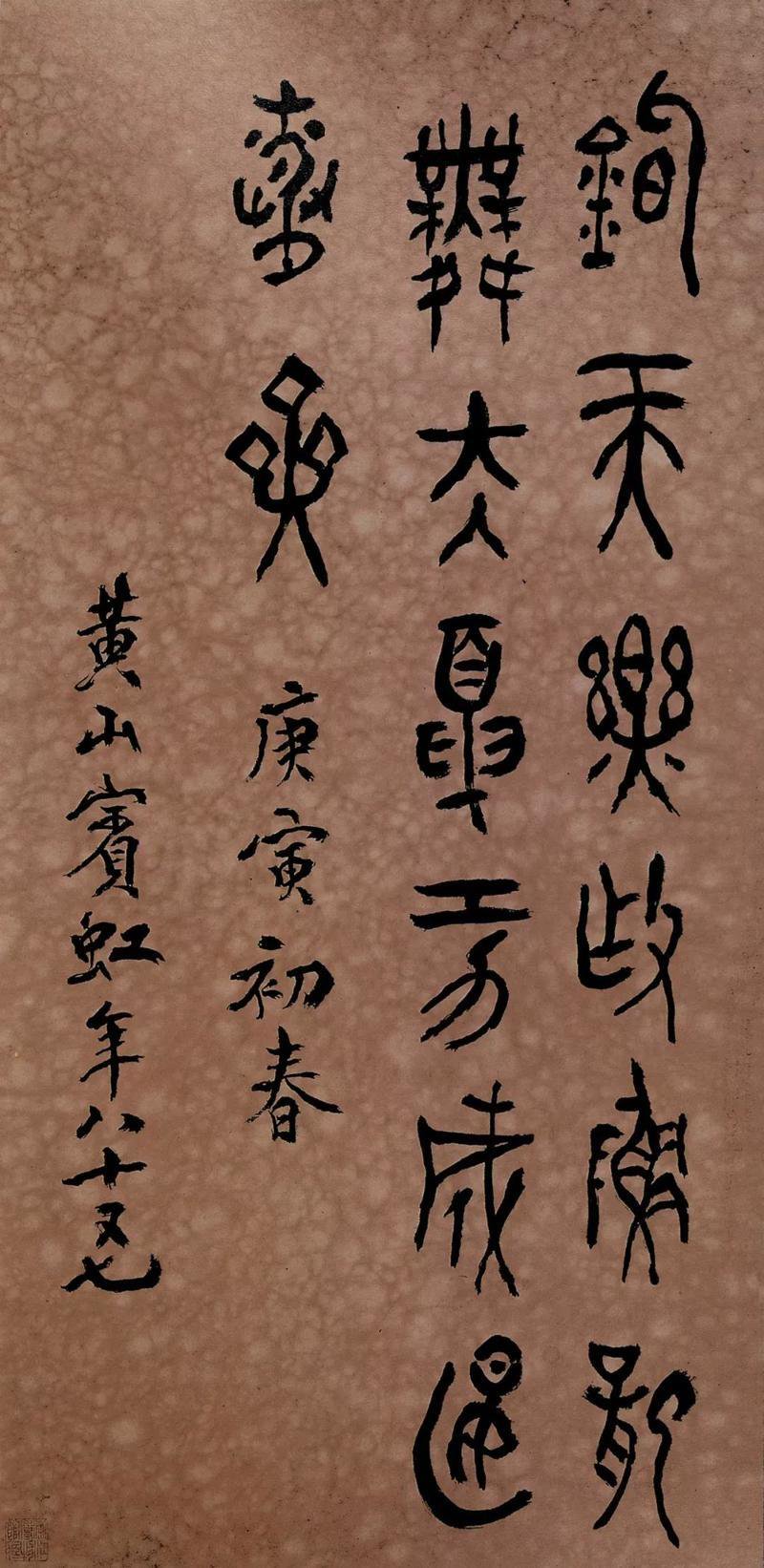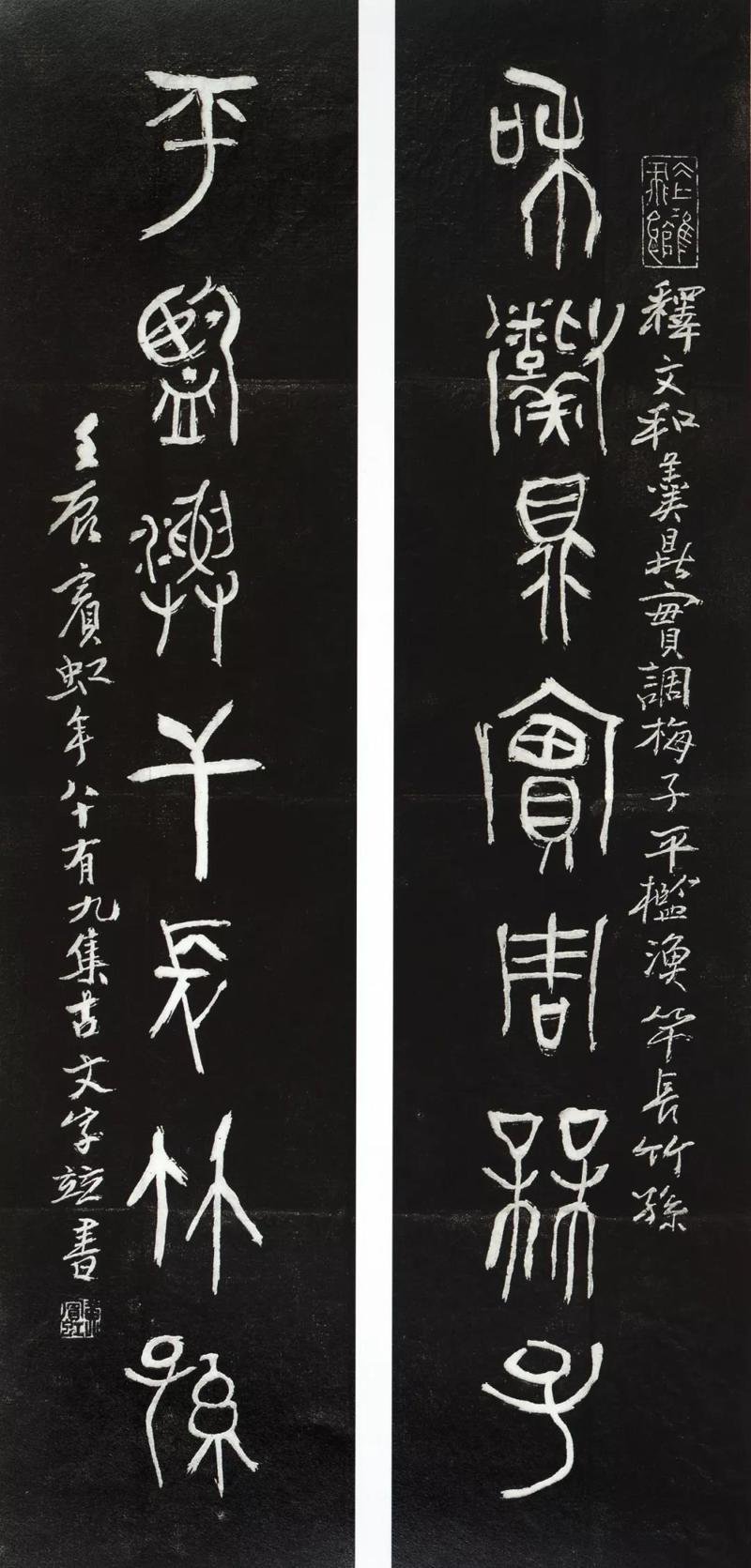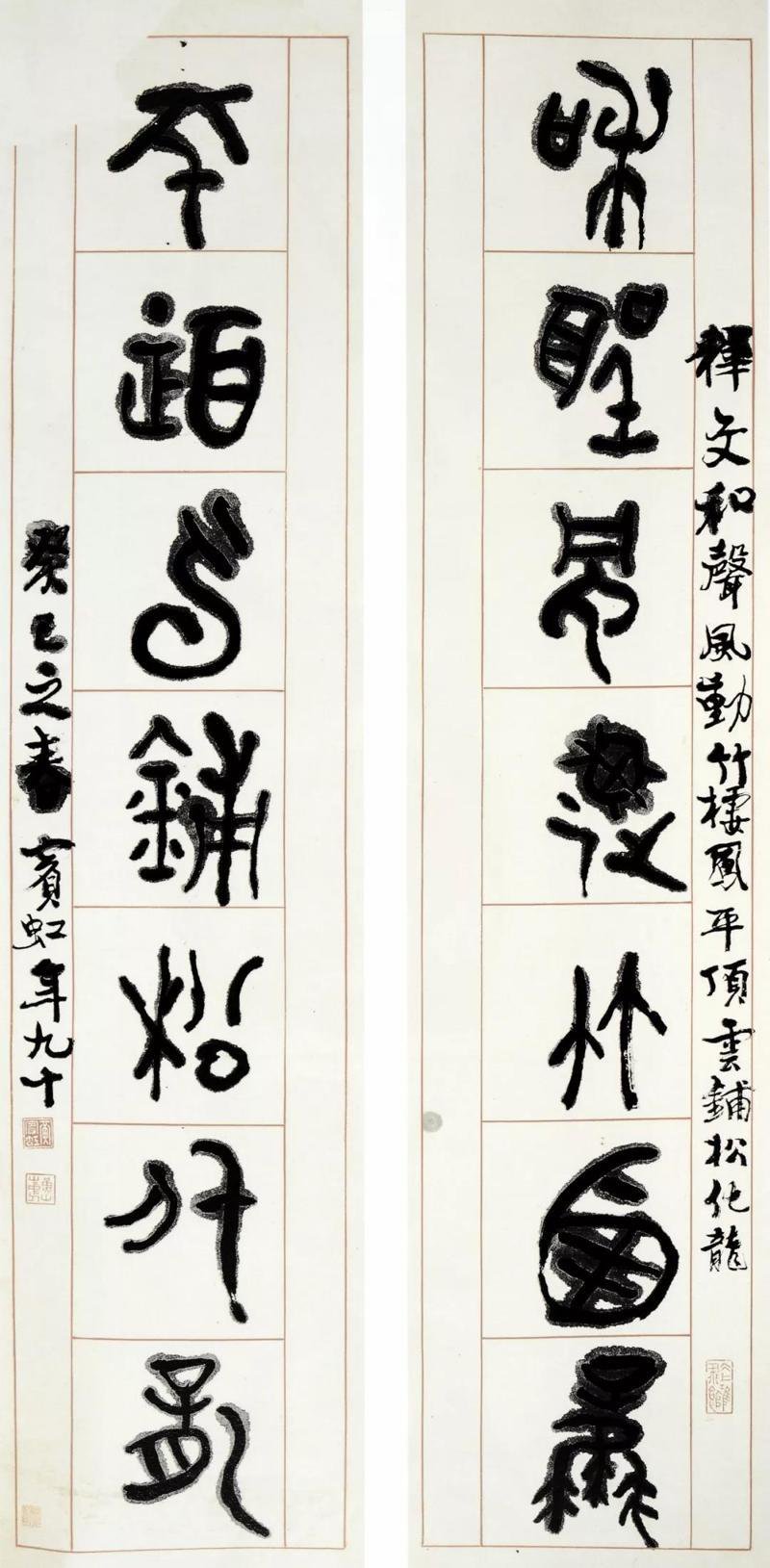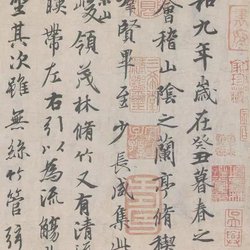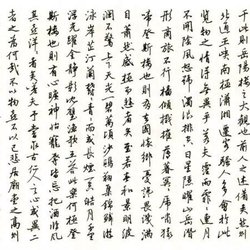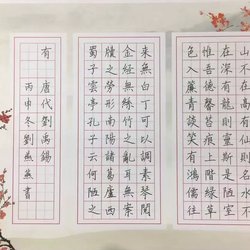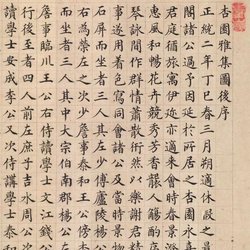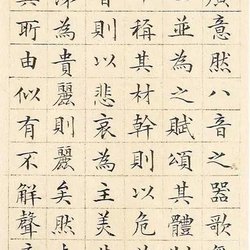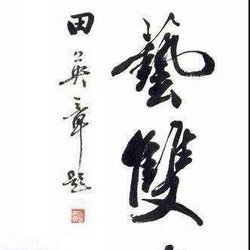Huang Binhong (1865-1955) was an outstanding art master in my country in the 20th century. "His calligraphy, painting, poetry and prose are all perfect." Huang Binhong's concept of gold calligraphy and the origin of glyphs. "Bronze inscriptions" originally referred to the characters engraved on ancient bronze vessels, usually specifically Refers to the inscriptions on bronze vessels of the Shang, Zhou, Qin and Han dynasties, also known as "Zhongdingwen". In Huang Binhong's case, it has a unique concept and specific connotation. First of all, here we will give a general explanation and definition of the specific connotation of "gold inscriptions" in Huang Binhong's gold calligraphy. At the same time, some paleographic concepts involved in Huang Binhong's golden calligraphy are also initially sorted out and analyzed.
In Huang Binhong's calligraphy works, you can often see the words "Huang Binhong collected gold inscriptions", "Collected ancient inscriptions", "Collected Zhou Jin ancient inscriptions", "Collected six countries' characters", "Collected ancient inscriptions", etc. So, what is bronze inscriptions, what is ancient inscriptions, what is six kingdoms inscriptions, and what is the ancient inscriptions he mentioned? What is the relationship between bronze inscriptions, ancient inscriptions, six kingdoms inscriptions and ancient inscriptions?
Huang Binhong said in the article "Chinese Writing": "The ancient text of "Shuowen" is similar to the texts of seven countries. Uncle Xu reiterated "Shuowen Jiezi" and said that mountains and rivers often have Dingyi, and the inscriptions are the ancient texts of the previous generation. However, if you look at it, The bells and tripods of the Shang and Zhou dynasties are no longer similar. The ancient prose in "Shuowen" is the script of the Six Kingdoms, and the Zhouwen in "Shuowen" is the script of the Zhou and Qin Dynasties." It can be seen that ancient Zhou is the collective name of ancient prose and Zhouwen. This point is consistent with Duan Yucai's annotation on "Gu Zhen" in Xu Shen's "(Shuowen Jiezi) Xu" of the Han Dynasty: "Gu Zhen refers to ancient prose and Zhou Wen." At the same time, Huang Binhong learned from Wang Guowei's "Gu Wen, Zhou Wen" "Zhenwen is a synonym for Dong and Qiantu characters during the Warring States Period." It is believed that the ancient script of "Shuowen" is the script of the Six Kingdoms, and the "Zhenwen" of "Shuowen" is the script of the Zhou and Qin Dynasties. Recent research shows that Zhouwen is a mixture of Western Zhou Dynasty and Warring States characters, and has many similarities with the Six Kingdoms characters. Zhou and Qin characters and Six Kingdoms characters are both descendants of Zhouwen, and Zhouwen is also the distant ancestor of Warring States characters. However, no matter what, one thing is certain, that is, "ancient Zang is similar to the writings of the Seven Kingdoms" and is undoubtedly similar to the writings of the Warring States Period.
Huang Binhong lived in an era when epigraphy was flourishing, and "literates loved the past, talked about epigraphy, admired the ancients, and studied epigraphy at the same time." However, there are many errors in the ancient biographies, so "since the Qianjia and Qianjia reigns of the Qing Dynasty, Confucianism and Confucianism have flourished, people have studied and annotated seal scripts, and often obtained evidence from bronze inscriptions." Huang Binhong's "Guangxi Xialing Lecture Society's Lecture Notes on Epigraphy" says: "Xu When he wrote "Shuowen", he originally wanted to correct the seal script, but unfortunately he did not find the real ancient texts, and most of the texts he relied on were incorrect. Now I will try to briefly list the ancient texts cited in "Shuowen" and prove the bronze inscriptions on oracle bones, because I have summarized the rest. It can be seen." It is also said: "Xu's "Shuowen Jiezi" has fourteen chapters, five hundred and forty parts, and nine thousand three hundred and fifty-three texts. The evidence is based on the text, and some of it is fake. If there are mistakes in interpretation, there are also things that have been taken away. From this exploration, there are many things that can be contradicted." At that time, bronze inscriptions had already become the evidence of "research and annotation of seal scripts", eliminating falsehoods and retaining authenticity. Huang Binhong said in the article "Epigraphy": "In recent decades, since Ruian Sun Yirang wrote "Ancient Collection of Relics" and Wu Daliu of Wuxian County wrote "Shuowen Ancient Collection", if there are clues to the study of epigraphy, it can be obtained from good deeds and appreciation. In addition to others, he has a special interest in studying characters. However, it is called ancient text, not gold inscriptions. Although it is not like the previous concept of specializing in antique calligraphy, it is still regarded as the ancient text of "Shuo Wen". . Scholars of modern classics have done extensive research and found out that "Shuowen" states that the ancient scripts are the scripts of the six countries in the East during the Warring States Period, and the Zhiwen are the scripts of the Qin Kingdom in the West during the Spring and Autumn Period and the Warring States Period. Therefore, the Zhongding script is not called ancient Zhi, but can be called ancient scripts." 'It can be seen that in Huang Binhong's era, the Zhongding Wen was called Gu Zhen instead of Jinwen. This was because people had always believed that Zhong Dingwen was the ancient Zhi of "Shuowen" in the past, and because they believed that the ancient text was the text of the Six Kingdoms. Zhongwen is a script of the Qin Dynasty, and it is inappropriate to call Zhongdingwen ancient Zhenwen. Therefore, it is also right to call Zhongdingwen, which is Jinwen, an "ancient script". It can be seen that in Huang Binhong's calligraphy works, "Ji Jin Wen" means "Ji Gu Zhou", "Ji Gu Zhou" means "Ji Jin Wen", and "Ji Jin Wen" has the same meaning. "Huang Binhong Ji Zhou Jin Gu Zhou" refers to both Jin Wen and Gu Zhou. This is also evidence that "Ji Guwen" is actually another name for "Ji Jinwen".
It can be roughly seen that the "bronze inscriptions" of Huang Binhong's gold calligraphy do not span the Shang, Zhou, Qin and Han dynasties in terms of time limit, but focus on the Spring and Autumn and Warring States periods when "rituals collapsed and music collapsed", dating back to the Zhou Dynasty. and Shang; in terms of region, it especially refers to the characters of the Six Kingdoms; in terms of provenance, it includes not only characters engraved on bronzes, but also characters on oracle bones, ancient pottery, coins, ancient seals, seals, weapons, etc.
It should be particularly pointed out that Huang Binhong’s gold calligraphy is an artistic concept. Strictly speaking, the “gold inscriptions” of Huang Binhong’s gold calligraphy are difficult to define accurately and clearly only from the perspectives of archaeology, history, and paleography. Because it also has a specific artistic connotation. The "Bronze Inscriptions" of Huang Binhong's gold calligraphy is based on the characters of the Six Kingdoms and is compatible with oracle bones, Shang and Zhou bronze inscriptions, ancient pottery, coins, ancient seals, seals, weapons and other characters. It is a special character that is opposite to the unified small seal script. Huang Binhong's seal script art is a personalized glyph style. In this sense, it seems that it is not necessary to call it bronze inscriptions, ancient seal scripts, or large seal scripts. In order to connect with modern archaeology, history, ancient characters and other disciplines, it must be adhered to Common academic standards are also for the convenience of writing and to avoid unnecessary confusion. You may wish to choose one of the many titles used by Huang Binhong and call it unified by "Jin Wen".
